Indexed In
- Academic Journals Database
- Genamics JournalSeek
- Academic Keys
- JournalTOCs
- China National Knowledge Infrastructure (CNKI)
- Scimago
- Access to Global Online Research in Agriculture (AGORA)
- Electronic Journals Library
- RefSeek
- Directory of Research Journal Indexing (DRJI)
- Hamdard University
- EBSCO A-Z
- OCLC- WorldCat
- SWB online catalog
- Virtual Library of Biology (vifabio)
- Publons
- MIAR
- University Grants Commission
- Geneva Foundation for Medical Education and Research
- Euro Pub
- Google Scholar
Useful Links
Share This Page
Journal Flyer

Open Access Journals
- Agri and Aquaculture
- Biochemistry
- Bioinformatics & Systems Biology
- Business & Management
- Chemistry
- Clinical Sciences
- Engineering
- Food & Nutrition
- General Science
- Genetics & Molecular Biology
- Immunology & Microbiology
- Medical Sciences
- Neuroscience & Psychology
- Nursing & Health Care
- Pharmaceutical Sciences
Brief Report - (2024) Volume 16, Issue 1
Crystallization and Characterization of Copper Sulphate Crystal and its Antimicrobial Activity
Starlet Priya1*, Sitalakshmi Rajagopalan Ramya1 and Suja Rani22Department of Physics, Lekshmipuram College of Arts and Science, Neyyoor, India
Received: 15-Jan-2024, Manuscript No. JMBT-24-24628; Editor assigned: 17-Jan-2024, Pre QC No. JMBT-24-24628 (PQ); Reviewed: 01-Feb-2024, QC No. JMBT-24-24628; Revised: 09-Feb-2024, Manuscript No. JMBT-24-24628 (R); Published: 16-Feb-2024, DOI: 10.35248/1948-5948.24.16:594
Abstract
Crystal growth plays a prominent role in the present era of rapid technical and scientific advancement, where the applications of crystals have unbounded limits. Developments in technology have stimulated the importance of discovering new materials and modifying the already known materials. Growth of crystals and their structural and physical characterization come under the scientific research on crystalline materials. Analytical reagent and AR grade chemicals and double distilled water were used in the growth of crystals from aqueous solutions by free evaporation method at room temperature. X-ray Diffraction Data (XRD) were collected from powder samples of crystals using an automated X-ray powder diffractometer. The reflections were indexed. The XRD confirms the crystalline nature of the sample crystal. Optical absorption (UV–Vis) spectra were recorded for the grown crystals to characterize optical activity. It is possible to observe the typical wide band associated to CS crystals in the range between 200 nm and 1100 nm with a maximum at 221 nm. The antimicrobial assays, which demonstrates that enhanced activity, obtaining a better antimicrobial effect against Pseudomonas, Penicillium, Rhizobium and A. flavus. These results showed that the CS Crystals can be particularly suitable as antimicrobial agent for specific application.
Keywords
Copper sulphate crystals; XRD; UV-Vis; Anti-microbial activity
Introduction
Crystallography is concerned with the nature of the regular atomic arrangements within the crystal. Crystallographers had made remarkable studies about the crystal before the discovery of X-ray by crystals [1]. However, only after that, it became possible to know about the internal arrangement of atoms in the crystals, in a more developed way [2]. As there was a remarkable achievement in the study of internal atomic arrangements it led to the study of more physical properties [3]. This interest is shifted from the study of natural crystals to the laboratory grown crystals. Copper sulphate is an odourless blue powder or transparent blue crystal. It is most commonly used for agricultural purposes as a fungicide to treat fruit and vegetable crops for mildew, blights and other fungus [4]. Copper sulphate is also used in water treatment plants as an algaecide and has applications as an herbicide. Copper is an inexpensive material and recently, it has found use as an antimicrobial agent and has seen application in the lining of food packaging to reduce spoilage [5]. Copper, a well-known antimicrobial agent, although a powerful and effective antimicrobial agent [6], copper is expensive and so can have high costs when required to coat high-contact surfaces that often have large areas. Antibiotic therapy has resulted in the persistence of multidrug-resistant microorganisms in the environment [7]. The development of multifunctional antibacterial drugs has been a long-term strategy for treating bacteria-caused infectious diseases. Antibacterial drugs with an antibacterial action against both gram-positive and gram-negative bacteria to overcome the aforementioned obstacles are preferred [8]. Hence the present investigation was aimed at synthesizing the single organic crystals. Identifying the crystal structure by powder X-ray diffraction analysis, characterizing the grown crystals by UV-visible absorption spectra and to study the anti–microbial properties of the grown crystal.
Materials and Methods
Growth of sample crystal
In the present study, we attempted to grow reasonable sized crystals which were sufficient for the proposed characterization. So, it proposed to grow the single crystals by slow (free) evaporation method. Analytical Reagent (AR) grade sample of copper sulphate and double distilled water were used for the growth of crystals. The calculated amount of copper sulphate salt and double distilled water were mixed in aqueous solution with continuous stirring. The solution was allowed to dry at room temperature. Transparent good quality crystals were harvested with in a period or 15 days by the method adopted by Mahadevan in 2020.
X-Ray powder diffraction measurement
X-ray diffraction finds the geometry or shape of a molecule using X-ray. X-ray primarily interact with electrons in atoms. When X-ray photons collide with electrons, some photons from the incident beam will be deflected away from the incident beam will be deflected away from the direction were they originally travel. If the wavelength of those scattered X-rays did not change the process is called Thompson scattering (elastic scattering). The scattered X- rays carry information about the electron distribution in materials. These are the X-rays that we measure in diffraction experiment.
UV-Vis-NIR spectral analysis
UV-Vis- NIR transmittance spectra were recorded for the grown crystals using a lambda 35 spectrophotometer in the wavelength range 200 nm-1100 nm.
Antimicrobial activity of CS crystals
The antimicrobial activity of CS crystals were determined by well diffusion method. Four bacterial pathogens such as Pseudomonas, klebsiella, S. aureus and streptococcus and four fungal pathogens such as A. niger, penicillium Sp, Rhizobium Sp. and Aspergillus flavus were used for this investigation. Fresh bacterial culture of 0.1 ml having 108 CFU was spread on Muller Hinton agar plates using sterile cotton swabs. The fungal strains were spread on potato dextrose agar wells of 6 mm diameter were punched off into medium with sterile cork borer and filled with 50 ml of powdered crystal extracts using micro pipette in aseptic condition. The plates were kept in refrigerator to allow pre-diffusion of extract for 30 min and then incubated at 37°C for 24 h and 28°C-37°C for 3-4 days for bacterial and fungal cultures respectively. The antimicrobial activity was evaluated by measuring the zone of inhibition.
Solubility data of CS
Temperature (°C): 30°C, 35°C, 40°C, 45°C, 50°C, 55°C, 60°C.
Amount of salts (grams): 6.45, 6.81, 7.45, 7.56, 7.78, 7.95, 8.15.
Results and Discussion
With the emergence of antibiotic resistance and the hospital acquired infection, the interest for antimicrobial agents has recently increased again in public health. Copper sulphate is recommended as a supplementary method increasing biological safety in the hospital environment. In the present investigation the growth of pure crystal was grown by slow evaporation technique at room temperature. The grown crystals were subjected to PXRD. UV-Vis spectroscopic techniques are used to characterize the grown crystals. The antimicrobial activity of pure copper sulfate crystals was determined. The results obtained in the present study are reported and discussed (Table 1 and Figure 1).
| Sample | Solvent chosen | Growth temperature | Period of growth | Size of the crystal |
|---|---|---|---|---|
| CS | Distilled Water | 40 | 10-15 days | 2.4 × 0.9 × 2.39mm3 |
Table 1: Optimized growth condition for CS crystals.
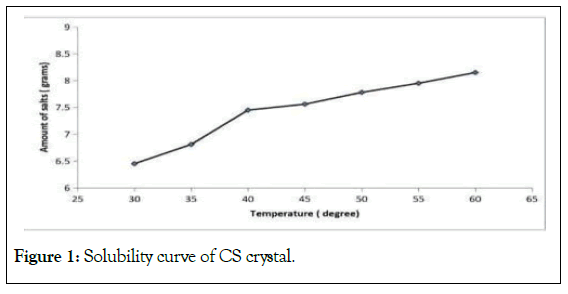
Figure 1: Solubility curve of CS crystal.
Crystals grown
The grown crystals can be represented as Copper Sulphate-CS:
Good quality crystals were harvested within a period of 15 days. The crystals grown in the present study are blue colour, stable and transparent. Figure 2, shows the photograph of the sample crystals grown. Crystal’s upto a maximum of 2.4 × 0.9 × 2.39 mm3 for CS were obtained. Both the crystal has orthorhombic system with Op24 space group. Table shows the optimized growth condition for CS crystals. The optimized growth condition for CS crystals are given in the below figure (Table 2).
| Scan type | Coupled Two Theta/Theta |
| Scan mode | Continuous PSD fast |
| Scan status | Completed |
| Start | 10.002° |
| End | 80.010° |
| Step size | 0.020° |
| Total time/step | 40.00 s |
| Time/step | 0.25 s |
| Axis offset | |
| Time started | 0 |
| Goniometer radius | 200.5 mm |
| Goniometer radius primary | |
| Goniometer radius secondary |
Table 2: PXRD results of the synthesized pure Cuso4 crystal.
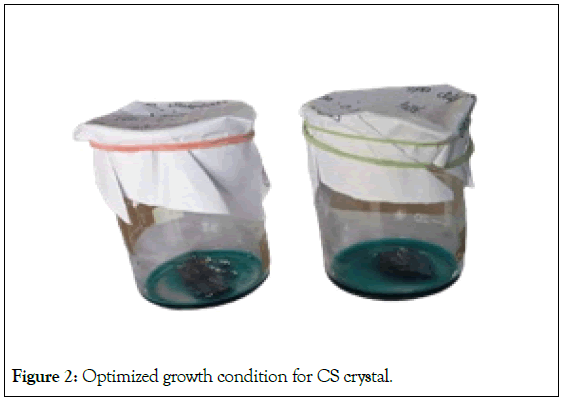
Figure 2: Optimized growth condition for CS crystal.
X-Ray diffraction analysis
The grown pure copper sulfate crystals were subjected to powder X-ray diffraction analysis and the resultant spectrum confirmed the crystalline nature of the samples and the X-ray powder diffraction pattern of the grown crystals are shown in Figure 3.
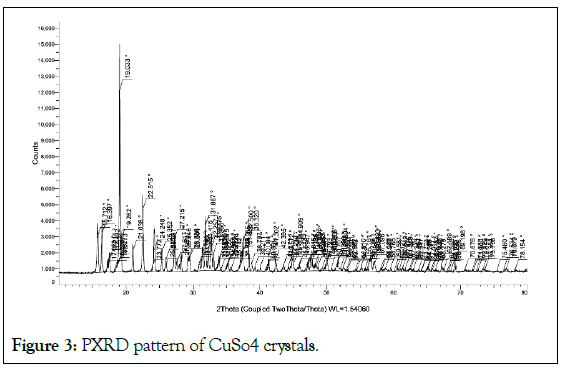
Figure 3: PXRD pattern of CuSo4 crystals.
Optical transmission spectrum
UV-Vis absorption spectrum gives information about the structure of the molecule [9]. The grown crystal with a typical absorption maximum at 221 nm. The UV-Vis transmission spectrum of pure crystal is shown in the Figure 4.
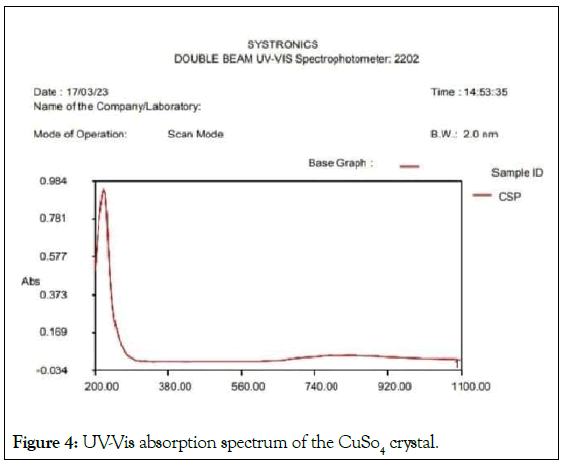
Figure 4: UV-Vis absorption spectrum of the CuSo4 crystal.
Antimicrobial activity of CS crystal
Antimicrobial activities of CS crystals were determined by well diffusion method against various bacterial and fungal pathogens. The pure crystal showed inhibitory activity on pseudomonas (11 mm), klebsiella (8 mm), S. aureus (7 mm) and streptococcus (6 mm) respectively. In the antimicrobial activity assays Copper sulphate crystals can be particularly suitable for acting as an antibacterial agent, so they are excellent candidates for specific applications (Table 3 and 4, Figures 5 and 6) [10-27].
| Crystal | Absorption edge (nm) |
|---|---|
| CS | 221 |
Table 3: Shows the Absorption peak of the UV-Vis spectrum of pure CuSo4 crystal.
| Sl. No | Test organisms | CS |
|---|---|---|
| 1 | Pseudomonas | 11 mm |
| 2 | Klebsiella | 8 mm |
| 3 | S. aureus | 7 mm |
| 4 | Streptococcus | 6 mm |
| 5 | A. niger | 8 mm |
| 6 | Penicillium Sp. | 11 mm |
| 7 | Rhizobium Sp. | 3 mm |
| 8 | A. flavus | 5 mm |
Note: Zone of inhibition in mm.
Table 4: Antimicrobial activity of CS crystals.
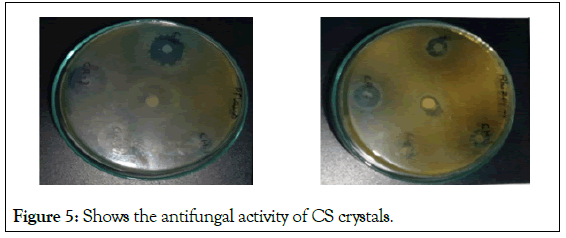
Figure 5: Shows the antifungal activity of CS crystals.
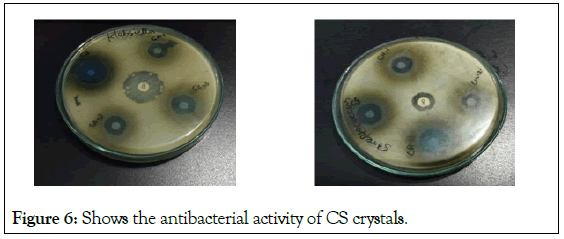
Figure 6: Shows the antibacterial activity of CS crystals.
Conclusion
Copper sulphate crystals were successfully grown by analytical reagent and AR grade chemicals by free evaporation method at room temperature. X-Ray Diffraction Data (XRD) were collected from powder samples of crystals using an automated X-ray powder diffractometer. The reflections were indexed. The XRD confirms the crystalline nature of the sample crystal. Optical absorption (UV-Vis) spectra were recorded for the grown crystals to characterize optical activity. It is possible to observe the typical wide band associated to CS crystals in the range between 200 nm and 1100 nm with a maximum at 221 nm. The antimicrobial assays, which demonstrates that enhanced activity, obtaining a better antimicrobial effect against Pseudomonas, Penicillium, Rhizobium and A.flavus. These results showed that the CS Crystals can be particularly suitable as antimicrobial agent candidate for specific application.
References
- Aguilera-Ruiz E, De La Garza-Galván M, Zambrano-Robledo P, Ballesteros-Pacheco JC, Vazquez-Arenas J, Peral J, et al. Facile synthesis of visible-light-driven Cu2O/BiVO4 composites for the photomineralization of recalcitrant pesticides. RSC Adv. 2017;7(73):45885-45895.
- Ann LC, Mahmud S, Bakhori SK, Sirelkhatim A, Mohamad D, Hasan H, et al. Antibacterial responses of zinc oxide structures against Staphylococcus aureus, Pseudomonas aeruginosa and Streptococcus pyogenes. Ceram Int. 2014;40(2):2993-3001.
- Sengodan S, Matheswaran B, Shanmugam S, Thangaian DT. Investigation on crystal facet-dependent antibacterial activity of Cu2O crystals–A structural, morphological, and spectroscopy studies. Results Chem. 2022;4:100358.
- Baran T, Visibile A, Busch M, He X, Wojtyla S, Rondinini S, et al. Copper oxide-based photocatalysts and photocathodes: Fundamentals and recent advances. Molecules. 2021;26(23):7271.
[Crossref] [Google Scholar] [PubMed]
- Bezza FA, Tichapondwa SM, Chirwa EM. Fabrication of monodispersed copper oxide nanoparticles with potential application as antimicrobial agents. Sci Rep. 2020;10(1):16680.
[Crossref] [Google Scholar] [PubMed]
- Bhachu DS, Sathasivam S, Sankar G, Scanlon DO, Cibin G, Carmalt CJ, et al. Solution processing route to multifunctional titania thin films: Highly conductive and photcatalytically active Nb: TiO2. Adv Funct Mater. 2014;24(32):5075-5085.
- Bhuyan T, Khanuja M, Sharma R, Patel S, Reddy MR, Anand S, et al. A comparative study of pure and copper (Cu)-doped ZnO nanorods for antibacterial and photocatalytic applications with their mechanism of action. J Nanopart Res. 2015;17:1-1.
- Bovis MJ, Noimark S, Woodhams JH, Kay CW, Weiner J, Peveler WJ, et al. Photosensitisation studies of silicone polymer doped with methylene blue and nanogold for antimicrobial applications. RSC Adv. 2015;5(68):54830-54842.
- Brayner R, Ferrari-Iliou R, Brivois N, Djediat S, Benedetti MF, Fiévet F, et al. Toxicological impact studies based on Escherichia coli bacteria in ultrafine ZnO nanoparticles colloidal medium. Nano letters. 2006;6(4):866-870.
[Crossref] [Google Scholar] [PubMed]
- Burello E. Towards an alternative testing strategy for nanomaterials used in nanomedicine: Lessons from NanoTEST. 2015.
- Carvalho P, Sampaio P, Azevedo S, Vaz C, Espinós JP, Teixeira V, et al. Influence of thickness and coatings morphology in the antimicrobial performance of zinc oxide coatings. Appl Surf Sci. 2014;307:548-557.
- Chen NF, Liao YH, Lin PY, Chen WF, Wen ZH, Hsieh S, et al. Investigation of the characteristics and antibacterial activity of polymer-modified copper oxide nanoparticles. Int J Mol Sci. 2021;22(23):12913.
[Crossref] [Google Scholar] [PubMed]
- Cuevas AG, Balangcod K, Balangcod T, Jasmin A. Surface morphology, optical properties and antibacterial activity of zinc oxide films synthesized via spray pyrolysis. Procedia Engineering. 2013 ;68:537-543.
- Santo CE, Lam EW, Elowsky CG, Quaranta D, Domaille DW, Chang CJ, et al. Bacterial killing by dry metallic copper surfaces. Applied and environmental microbiology. 2011;77(3):794-802.
[Crossref] [Google Scholar] [PubMed]
- Gastmeier P, Stamm-Balderjahn S, Hansen S, Nitzschke-Tiemann F, Zuschneid I, Groneberg K, et al. How outbreaks can contribute to prevention of nosocomial infection: Analysis of 1,022 outbreaks. Infect Control Hosp Epidemiol. 2005;26(4):357-361.
[Crossref] [Google Scholar] [PubMed]
- Giannousi K, Pantazaki A, Dendrinou-Samara C. Copper-based nanoparticles as antimicrobials. 2017;515-529. Elsevier.
- Gittard SD, Perfect JR, Monteiro-Riviere NA, Wei W, Jin C, Narayan RJ, et al. Assessing the antimicrobial activity of zinc oxide thin films using disk diffusion and biofilm reactor. Appl Surf Sci. 2009;255(11):5806-5811.
- Grass G, Rensing C, Solioz M. Metallic copper as an antimicrobial surface.2011;77(5):1541-1547.
[Crossref] [Google Scholar] [PubMed]
- Gutierrez H, Portman T, Pershin V, Ringuette M. Evaluation of biocidal efficacy of copper alloy coatings in comparison with solid metal surfaces: Generation of organic copper phosphate nanoflowers. J Appl Microbiol. 2013;114(3):680-687.
[Crossref] [Google Scholar] [PubMed]
- Hassan IA, Parkin IP, Nair SP, Carmalt CJ. Antimicrobial activity of copper and copper (I) oxide thin films deposited via aerosol-assisted CVD. J Mater Chem B. 2014;2(19):285528-60.
[Crossref] [Google Scholar] [PubMed]
- Hong R, Kang TY, Michels CA, Gadura N. Membrane lipid peroxidation in copper alloy-mediated contact killing of Escherichia coli. Appl Environ Microbiol. 2012;78(6):1776-1784.
[Crossref] [Google Scholar] [PubMed]
- Hassan IA, Sathasivam S, Nair SP, Carmalt CJ. Antimicrobial properties of copper-doped ZnO coatings under darkness and white light illumination. ACS omega. 2017;2(8):4556-4562.
[Crossref] [Google Scholar] [PubMed]
- Imani SM, Ladouceur L, Marshall T, Maclachlan R, Soleymani L, Didar TF, et al. Antimicrobial nanomaterials and coatings: Current mechanisms and future perspectives to control the spread of viruses including SARS-CoV-2. ACS nano.2020;14(10):12341-12369.
[Crossref] [Google Scholar] [PubMed]
- Salah I, Parkin IP, Allan E. Copper as an antimicrobial agent: Recent advances. RSC Adv. 2021;11(30):18179-18186.
[Crossref] [Google Scholar] [PubMed]
- Jagadeesh HM, Suresh Kumar R, Ananda Kumari. Growth and characterization of an organic NLO crystal. 2016.
- Jana TK, Pal A, Mandal AK, Sarwar S, Chakrabarti P, Chatterjee K, et al. Photocatalytic and Antibacterial Performance of α-Fe2O3 Nanostructures. ChemistrySelect. 2017;2(10):3068-3077.
- Jeyaraman R, Kadar J, Arumugam M, Govindasamy R, Abdul AR. Synthesis and antimicrobial activity of copper nanoparticles.2012.
Citation: Priya S, Ramya SR, Rani S (2024) Crystallization and Characterization of Copper Sulphate Crystal and its Antimicrobial Activity. J Microb Biochem Technol. 16:594.
Copyright: © 2024 Priya S, et al. This is an open-access article distributed under the terms of the Creative Commons Attribution License, which permits unrestricted use, distribution, and reproduction in any medium, provided the original author and source are credited.

